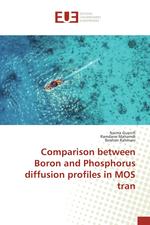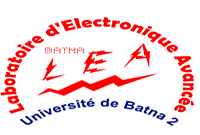Citation:

Abstract:
Dopant diffusion in semiconductors is a very important in process step of device. diffusion has a great influence on the electrical and electronic properties especially in the lacunary and interstitial mechanismis. This chapter investigates the diffusion of P and B in Si. The profiles have been simulated using Secondary Ion Mass Spectrometry (SIMS) modele [1,2]. In the process for manufacturing MOS transistor, the manufacturers follow basically three steps. The starting substrate is a monocrystalline silicon wafer. The first step consists in producing the polysilicon gate on a thin layer of SiO2 followed by implantation (boron) of the gate. The second step is the training of source-drain junctions by ion implantation to high dose (≈ 10 15 at / cm2) and the third is to silicide the source-drain junctions for reduce the contact resistance. One of the most promising silicides is the monosilicide of nickel (NiSi). therefore, it is very important to understand the redistribution of dopants in the different active parts of a transistor by studying the following points: • The redistribution of boron in polycrystalline silicon (gate), • The redistribution of boron in the monocrystal
